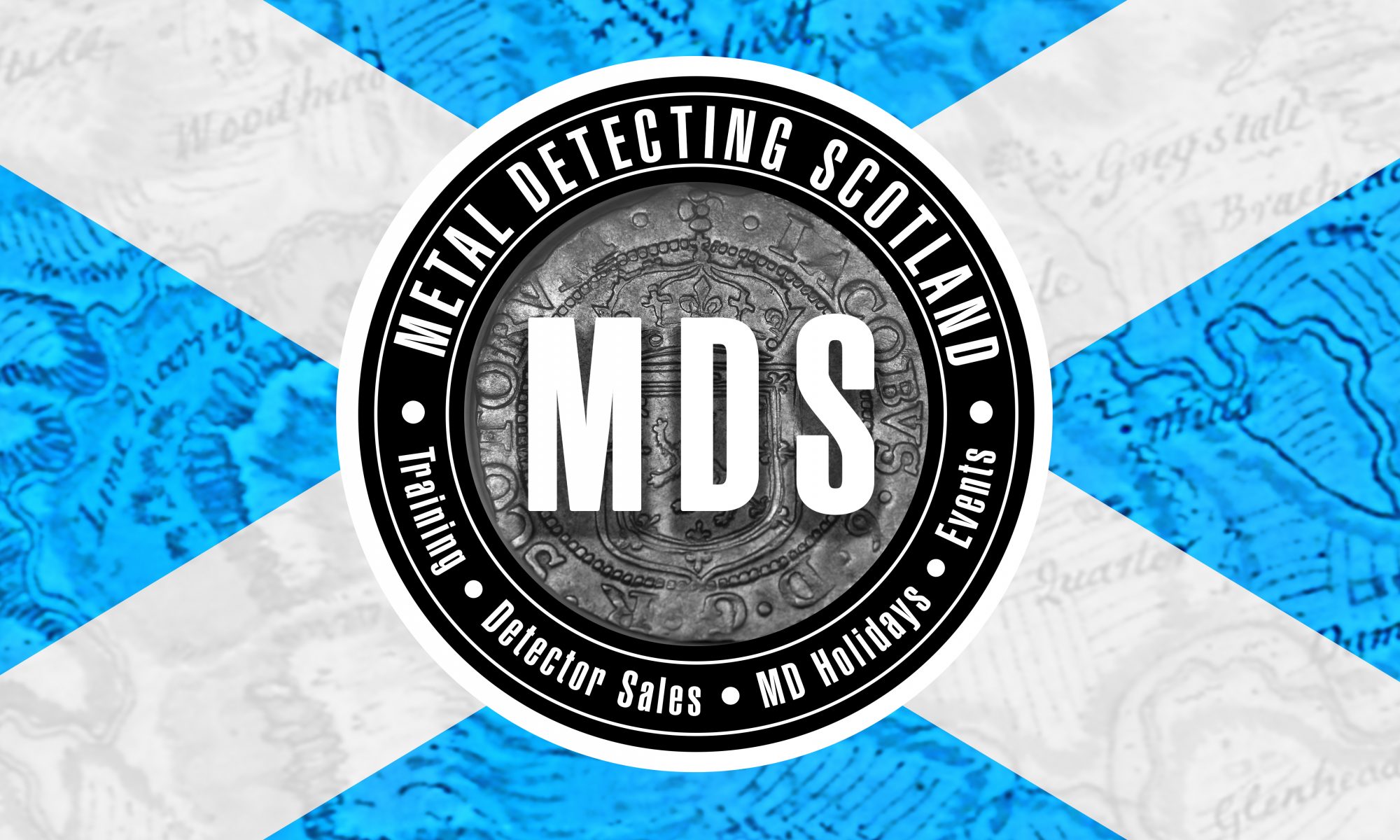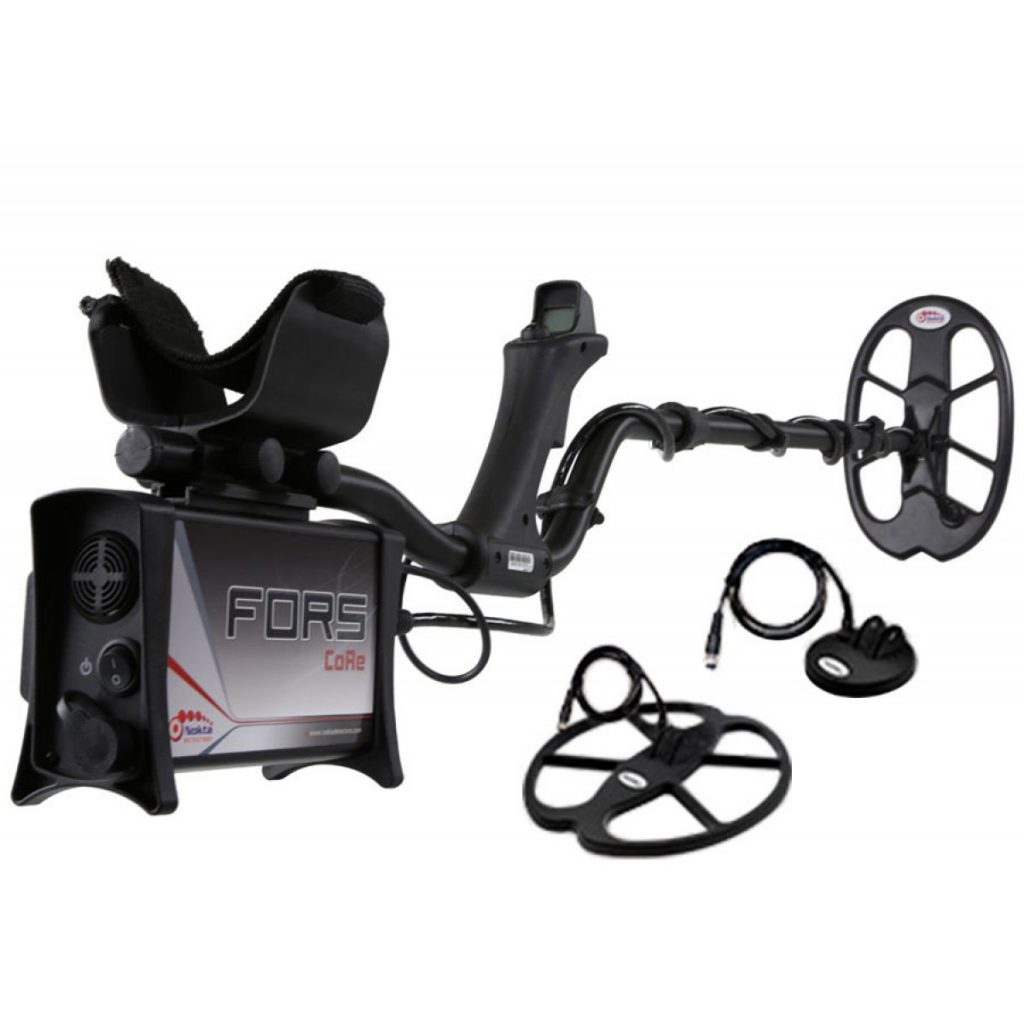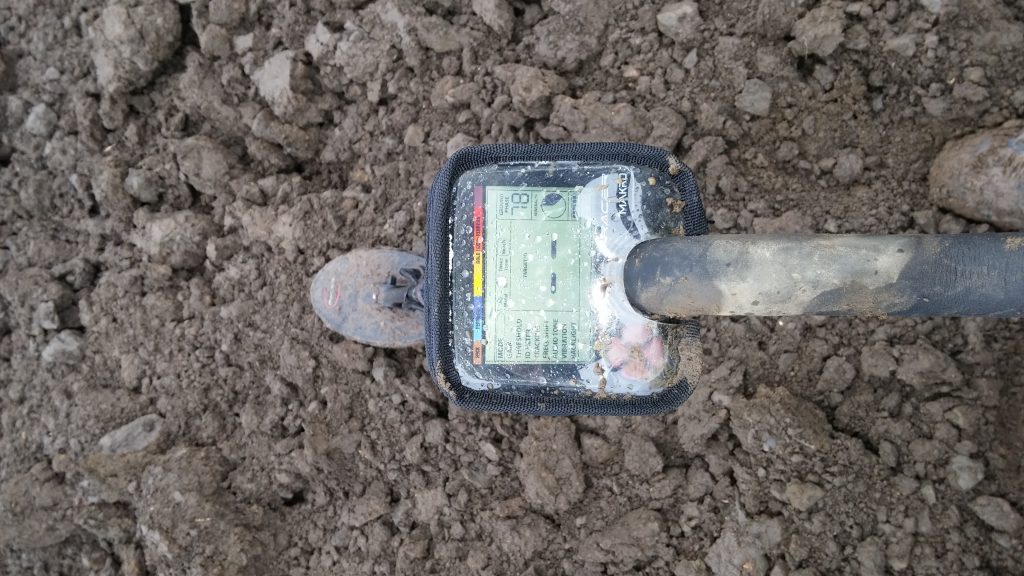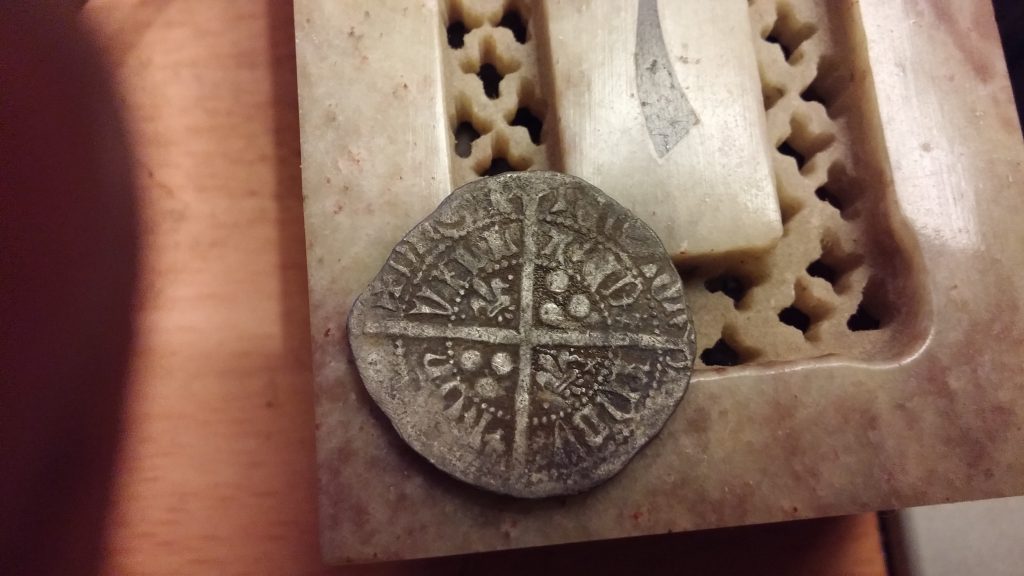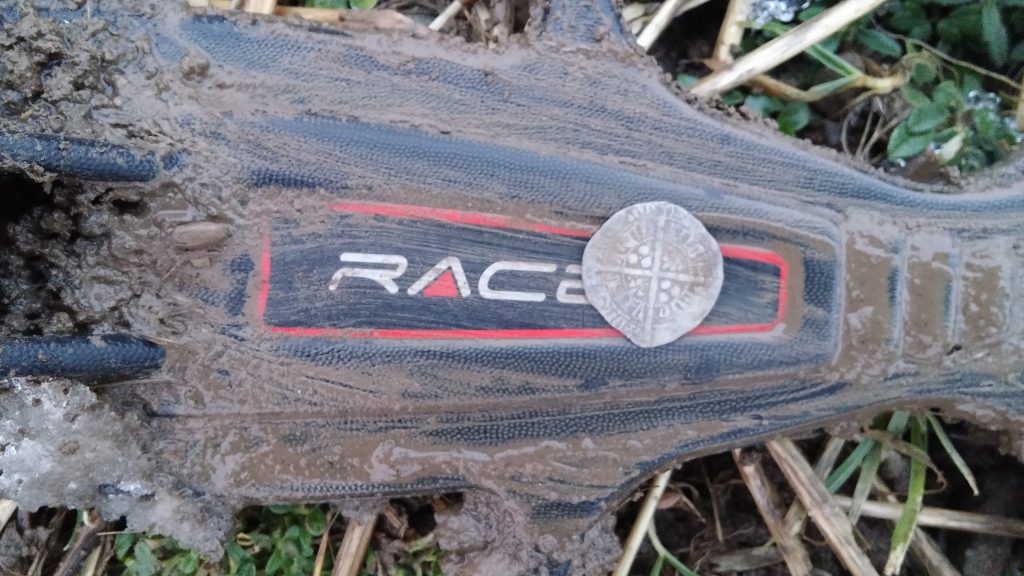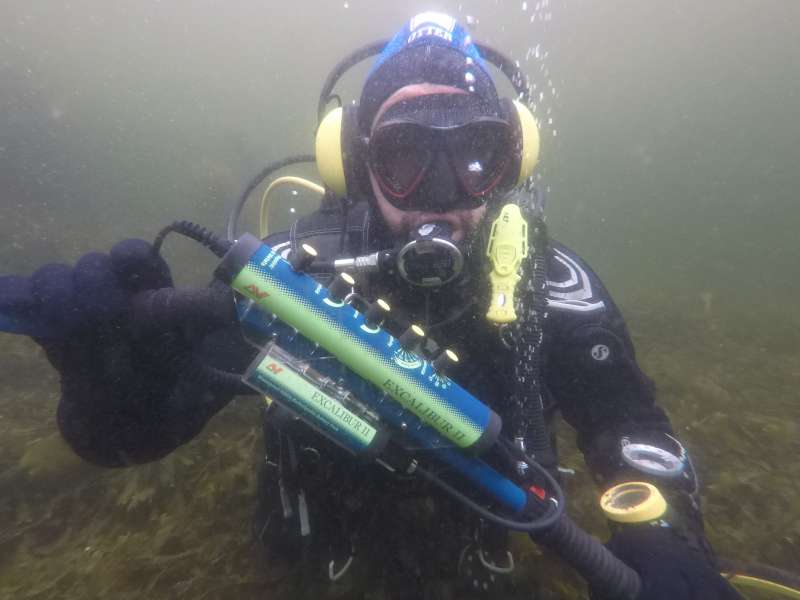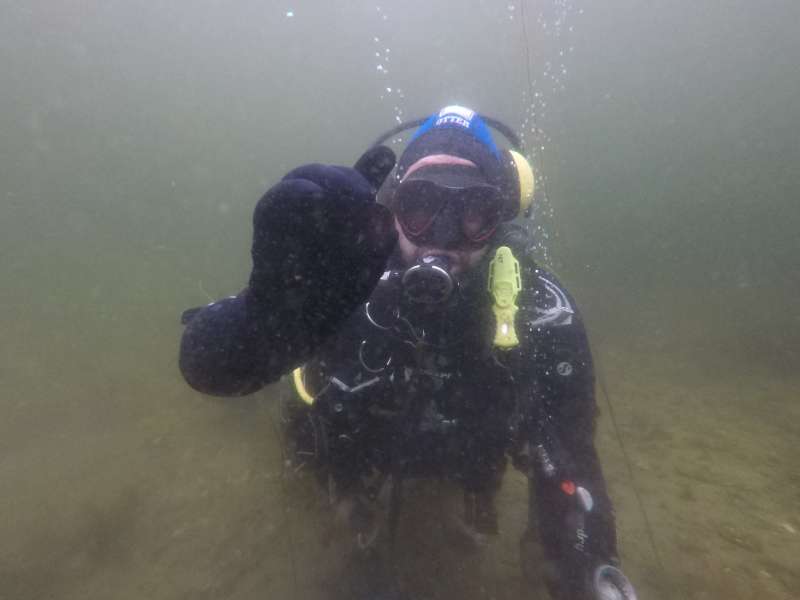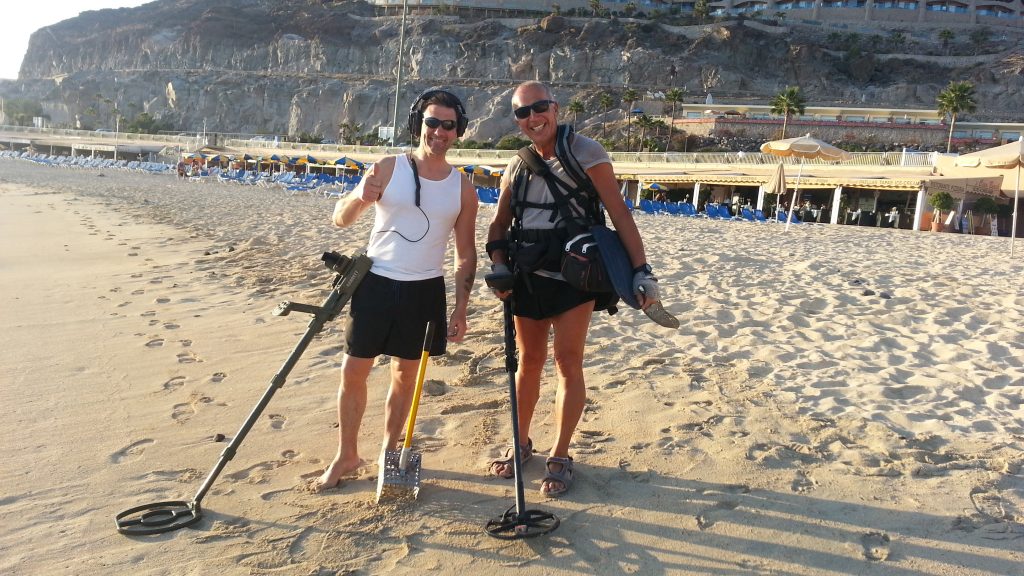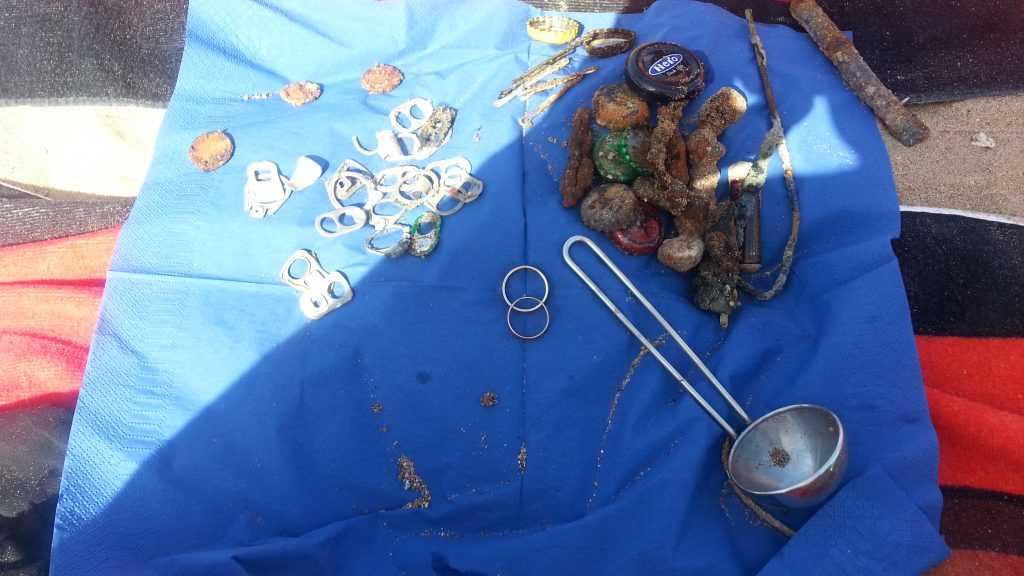What is value for money when it comes to detecting. Toddy explains why detectorists now are getting fantastic value for money. Please watch and could you like and sub my channel for more cracking videos to come.
24.8.20 Dig
Black Sand
First Gold
Story of a find – It Must be silver
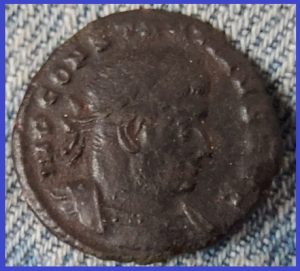
When my kids were small I used to take them to North Yorkshire every year in a Caravan Circa 2005. This came about because I used to be a trader selling metal detectors and equipment at Northern England Weekend Searchers rallies. So I would go to Yorkshire for nearly the full month of August in our touring caravan. This was something that I loved and my kids have great memories of our times going to Yorkshire and the rallies. This is why I started to hold big rallies in Scotland as we never had anything like that in Scotland and I wanted to recreate that once a year with My Big Scottish Rally and that I have done with the help of my family and friends.
While in Yorkshire I acquired a few permissions to detect in between the rallies and when we were finished doing what we done during the day. This site I was on was a site that had been detected before with local guys but it had enough targets to keep me going. At the time the internet was just starting off and all us Scottish guys, had for years, was pictures of beautiful finds from England in the magazines that we drooled over. In Scotland after years of detecting most roman coins we found were Silver Denarius and hardly any bronzes but if one did turn up it was usually a big worn Sestertius. When we seen pictures of these bronze Constantine’s in the magazine we could not believe the great condition of them. Our worn Georgians were not in that good a condition!
One day my poor wife Pauline was left playing connect 4 with our kids as it was raining and I was on the field detecting 😉 I was in my element a full field to myself with everything from Roman, Saxon and medieval in it, this was confirmed by a local guy I met who showed me some of the nicest roman brooches I had ever seen and all from this field so This is why i spent every year in Yorkshire lol. Every time you got a target your heart pumped with excitement at the thought of finding a Saxon coin or lovely hammered. I had my trusty Whites DFX and 10 x 5 DD coil on it which had my own tone ID program in it and I was working an area loaded with iron when I got a nice non ferrous signal in my Tony Maz headphones. I dug out my target from the stubble and seen the lovely blackish coloured coin sitting on the soil. I picked it up and wiped the dark soil off it and could not believe it I had found one of those belters from the magazine!!! Then I thought surely this must be Silver in that superb condition!! I was over the moon with my find and within the hour I had another one of these crackers.
These coins apparently would have been silver washed and that is why they are in good condition. I am sure they are Constantine’s. I hope you enjoyed my Tale of a Find part 1
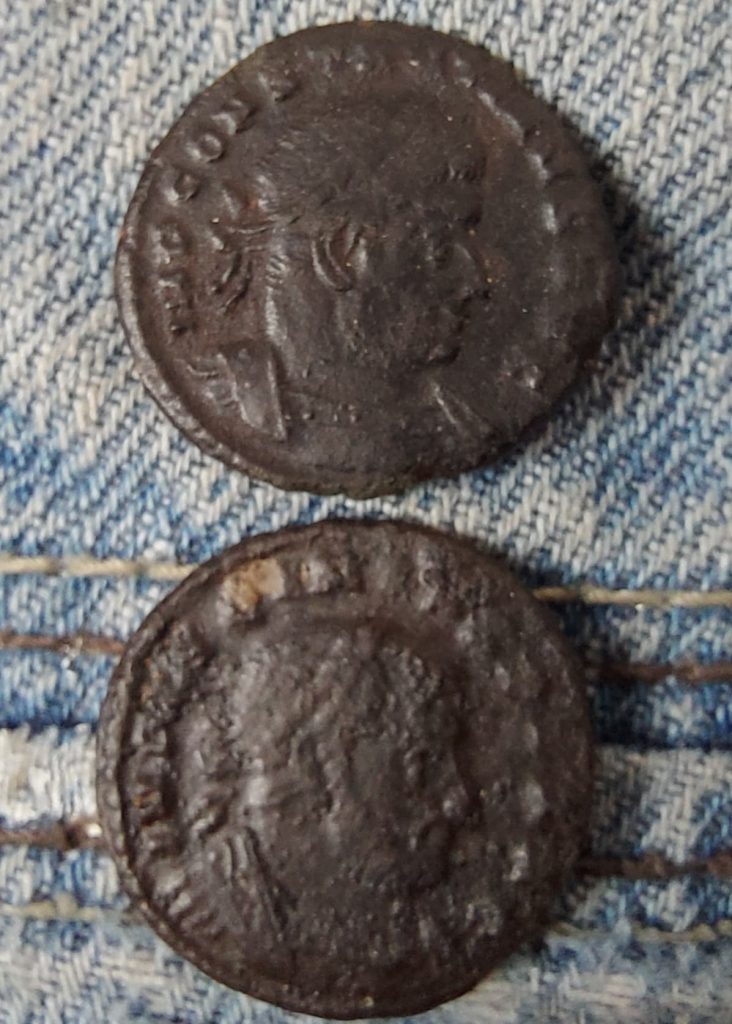
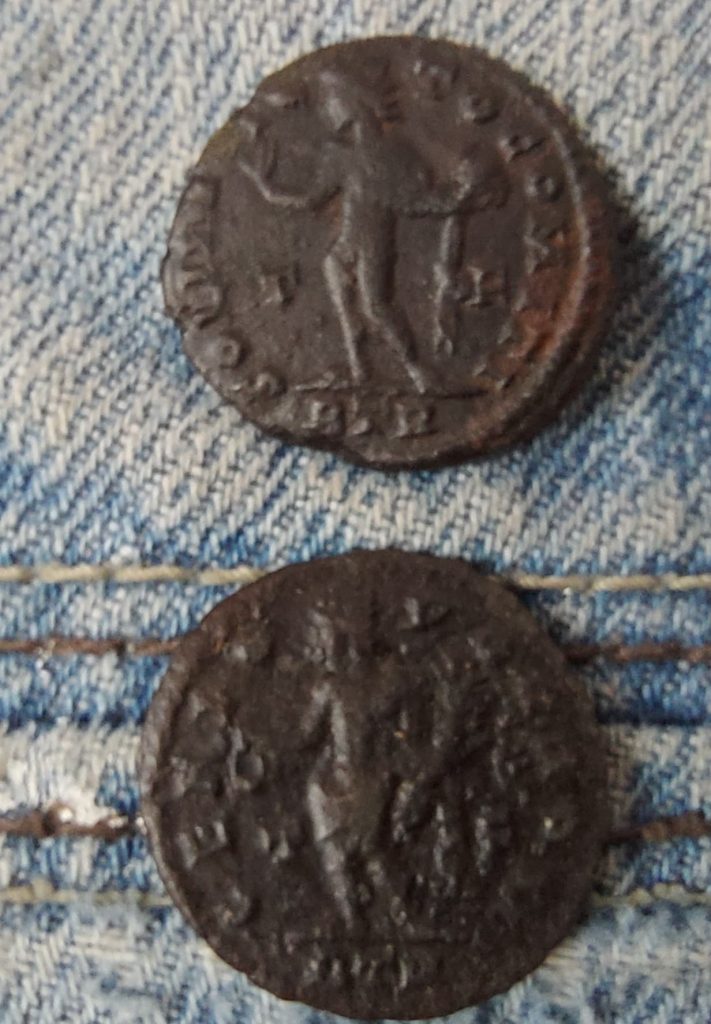
Toddy & Norman the rally organiser
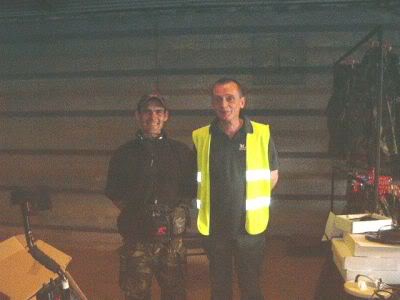

Nokta Fors Core
Makro Racer
Minelab Excalibur II
A True All Round Detector
I spent a long time doing this for the Treasure Hunting magazine and it never got posted as the pictures where not that great. Shame as I spent months doing a Land & Sea report. Now you can read the best Excal report online. This is still the best Underwater detector on the market so far due to its discrimination abilities.
When asked to do a test on this detector which I have currently been using for some time I thought what can I say about a detector that has been out for a number of years and is used and talked about all over the world on social media. It has been chopped and changed by users, mods added to change it’s use for each individuals uses. Why? Because it has got to be one if not THE best all round metal detector in the world
- It can compete with any detector currently on the market for Relic hunting and is also weatherproof.
- On the beach it operates perfectly in the surf and beach without changing settings
- It is depth rated to 66 meters so you can go diving with it and it also discriminates so you are not digging iron saving time and air under water.
Relic Hunting
As you know from my previous articles I run metal detecting digs up here in Scotland which includes a Wednesday & Sunday dig so I am out with the Excalibur II at least twice a week for eight hours a time. I have used most makes and models of detectors over the years and the Minelab Sovereign XS2a Pro for around four years of these years so using the Excalibur II on land which has the same sounds was like talking to an old friend hearing it’s unique tones. I got a few looks at the digs as I had made up my own hipmount kit as using it in it’s standard set up will give you a sore wrist and shoulder if your site is quite quiet as you are not stopping to dig which gives you a rest.
Hipmount kit’s are available to buy from your Minelab dealer which will make your detector light as a feather and this is my preferred option. The Excalibur has what is called Broad Band Spectrum technology which operates on Multiple frequencies at the same time which in my experience makes it great at handling most ground conditions. If you are reading this and have only used an entry level detector and wondering how this is better or why would it benefit you.
In the UK fields are covered in coke (Burnt Coal) and iron and both of these items can give you a good signal on a single frequency detector and discriminating them out especially coke can lose you small hammered coins and thin gold rings. The Excalibur II has a variable discrimination and with the Discrimination knob set to the 1 position will eliminate all coke and all iron signals accept some big iron and iron rings and will still find you cut quarters and larger hammered coins.
If you are new to the Excalibur II what you will realise is that you set the threshold knob so that you just hear a background noise, this is called a Threshold which will help you set the sensitivity and will also help you decide if your target is Iron or not. If you set the Sensitivity to Auto mode then you will not need to worry about setting the sensitivity level as you Excalibur will do this for you Automaticly and is recommended to use if you are new to the detector. The trade off is that the detector will set it lower than optimal for smoother operation. If you want to set it manually for more depth then it is easy to do firstly find a clean but of ground away from other metal detectorists and a patch that has no iron.
- Threshold : Turn on your Excalibur II until you hear a faint threshold
- Disc : Disc (Pinpoint is all metal)
- Discrimination : 1, With the detector set here you will eliminate most iron. When you pass over a bit of iron your threshold will “Null” cut out so if you turned your threshold off you would not hear it “Null” and you would not know how much iron was on your field and how slow to go. If you have lots of iron you would need to slow down to give your detector time to recover to respond to the next target, This brings me nicely on to sweep speed. The Excalibur/s have a slow recovery speed so a 3 second sweep is ideal. If you go too fast you will lose tiny items so go slow and let the detector work for you and listen for the faint deep signals.
- Volume : to your desired level
- Sensitivity : start with the level at 1 and with the coil an inch or two above the ground move it shoulder distance apart which moving it to 2 then 3 and so on until the back round hum starts to cut out, once this happens back it off a number. If your threshold is constant as you move it from side to side then you have successfully set the sensitivity for that area. Remember though if you are using it it can change and this is indicated with the threshold cutting out for long periods of time. If this is happening reduce it or put it in Auto mode.
- Tones
: There
is no knob for this the tones are factory set but to test them for
land get these items
- Iron Nail
- Cut Half Hammered or thin gold ring
- Medium size hammered coin
- Victorian Penny
- Silver Shilling
Now pass each one over the detector to learn it’s sounds. You will note that the cut half has the lowest tone and the Silver shilling has the highest tone while the iron makes the threshold cut off and all the other targets are in between tones. Familiarise yourself with these tones and you will never need to rely on a meter I promise you that. Remember the golden rule especially with the Multi Frequency detectors “ Slow & Low”. This detector is a deep detector even more so in wet pasture ground so expect it to keep up with most top end detectors with the same coil size.
Beach & Surf Detecting
I have been detecting beaches since the “Mad Cow” disease outbreak due to not being able to get on to land anywhere. I remember at the time being utterly depressed at the thought of having to do beaches, did you note “Having” to do beaches as there was no way I could not go out detecting. At the time I used the Sovereign XS2a Pro with my detecting buddy at the time Sammy. We detected Portobello beach Edinburgh and it was the winter time and absolutely Baltic. I learned my first lesson in beach detecting then as we where searching an area of pebbles/stones that ran up the length of the beach a good 40 meters. In this strip we could not use the manual sensitivity just like the Excalibur so we used Auto and we dug hundreds of coins and jewellery but mostly if not all silver.
Over the weeks the strip started to full with sand and the same stones we had searched where now getting harder to reach under the sand. This taught me what to look for on a beach and also to look out for new places to search for.
On one occasion a local club came down and where detecting four wide in front of myself and Sammy with single frequency detectors all the rage at the time but we noticed we where digging behind them and they where not digging so our confidence in the ability of the Multi Frequency to eliminate the affects of the salt and magnetic stones allowing us to find the coins and artefacts. I have used most single frequency detectors on wet salt sand and believe me they WILL NOT compete with a Multi frequency for depth and stability even if it has a beach mode.
I detect a lot in the Surf up to my chest with a wetsuit on, I remember reading about the Blue Barnicle articles in the this magazine years ago and loved them now for the last ten years have been doing the same in the USA and Spain. I worked in Spain for nearly a year and detected most nights on different beaches and this is why I tried different detectors and the best two where the Minelab CTX 3030 & Excalibur II without a doubt.
The ability these have over Pulse Induction units is the ability to knock out Bobby pins and other iron items and still find jewellery and coins.
I also use the detector here for wading and thoroughly enjoy getting my wetsuit on and mask and snorkel and winkling out the coins from the hard packed stones. I have a video on my website of me using the Excalibur on land, sea and surf.
Scuba Diving
I am a Padi Scuba Diving Instructor (MSDT) and out of shear coincidence I took up Scuba diving for a whole different reason mostly professional and before I knew it I was detecting under water firstly for rings and jewellery then In have started detecting older sites here in Scotland not for wrecks but relics. My coin finds have been mostly early victorian but I have a few sites I am going to dive and hopefully get a but older. This is where the Excalibur comes into it’s own firstly you can use the divers stem to make it shorter or an non manufacturers shorter stem system available. I have had no problem using the factory diving set up but if anyone supplies them I would not mind testing it on my Excalibur with the view to buying it.
The Excalibur operates the exact same on land, beach & sea and I do not even change my settings apart from using Auto Sensitivity in the sea. It is loud so you can hear it through the hood and in cold Scotland I won’t be cutting slits in my hood for the ice cold water to flood in!! Please remember to attach a lanyard to the detector and clip it to a D-ring incase you have to use both hands for anything and incase of an emergency. Always dive with a buddy if you can and make sure to keep an eye on your air as it is easy to lose track of time looking for treasure!
If you do any of these types of metal detecting and wondered what this strange looking detector was with the knobs and bright yellow I hope this enlightens you on the ability of this famous metal detector getting used all over the world as we speak.
HH
Toddy Irvine
Evolution Sand Scoop
Garrett ATX PI
“RAMBO”
Garrett ATX Pulse
January 2014
I heard that a new Garrett PI detector was coming out so I headed straight for the website to check it out. What I seen I was not expecting…wow it looked military and very well made.
I was on the e-mail to Nigel to ask if I could test it, This is something I never do but having owned three Garrett Infiniums, Whites TDI, TDI Slimline, Surfmaster, Goldscan and GPX 5000 since around 2005 and felt I had the experience and I wanted to see how it would handle the iron! I do not get over technical about metal detectors as I have found this to be of no use to me in my twenty five year detecting career. I deal with the facts and can it do what is advertised ? which is either YES or NO I don’t care for graphs and charts or what if’s.
I first started looking at pulse induction as I said above around eight years ago. I had some cracking sites but the detectors I was using year in and year out just where not getting through the mineralisation. I tried every combination I could but could not get the edge I was looking for over my detecting mates. I am always looking for the upper hand or to be ahead of the game as detecting is getting more popular so if I can get extra depth over the next guy that will do me!
I was in search of something and did not know what but while browsing through some Garrett brochures I noticed the Infinium Land and Sea (LS). Regton never stocked them so me being me imported one from the USA as I had to try it. I went out my first day with it with my pals Rab and Bobby to an old medieval site. I remember digging nail after nail after nail and getting a lot of stick from my mates but at the end of the day I got a cut half of William I, I was over the moon as my hunch was correct I could find the stuff with a PI. Over the next month or two I compared signals with my mates who had Multi Frequency detectors with 14” coils on them. On one eye opening occasion I tested a signal with Rab who could not hear the target, I dug it out and it was a Scottish copper turner….yes I was over the moon I was now digging less iron and now getting better depth than my mates. I continued to use the LS on land and with great success and in the surf on my holidays to the USA. I used a number of Pulses since then and I know the merits of certain PI’s on land.
Pulse detectors on Mineralised soil will penetrate deeper than a VLF or Multi Frequency detector that I have proven on hundreds of occasions BUT on soil that is not mineralised the depth advantage gets a lot less if any
Now you know my history on why I was very keen to try out the new pulse. I stayed away from the US forums as I like to judge a detector on my own land sites here in the UK which are a far cry from parks in America. This is in no way an insult to the guys in the US as I respect a lot of these guys knowledge on pulse detectors but it’s a different ball game over here looking for cut half’s and quarters on iron laden sites.
I received the ATX and as soon as I got it I opened it and to say it’s different is an understatement, it comes in a fancy wee holdall with all the bits inside. I immediately lifted it out and my it felt bloody heavy and I did say about being well made. I have never felt a detector this sturdy and when I set it for my size it was perfectly balanced and I never felt it heavy but how would I be after eight hours on a mucky field.
I was desperate to test the discrimination function and iron check so cleared the kitchen work top as this is my usual air test bench. I had a quick scan of the manual which is very easy to understand when I came up against a function I needed I had a read on that section in the manual and honestly I found the settings very easy to understand. I also like the interface everything is in reach of your thumb and you don’t lose grip when you go to use any of the buttons.
My BIG question was will the discrimination and iron check feature work? Will it cut out iron and still get hammered coins I had lots of doubts but I had good reason to as pulse induction detectors detect all metals and they don’t discriminate BUT the high end ones do like the GPX 5000 and this is why I use one. In my experience all the other Pulse’s I have used like the Whites TDI, Infinium can be tweaked to eliminate some iron by using the pulse delay in combination with the ground control by this is a tedious process if your site has a lot of iron on it.
I set Rambo up and started to set it up for testing indoors, simply reduce the gain and frequency scan it and it will be very stable.
Build Quality Is of top quality and everything is easily adjusted. My concern with the coil constantly needing pushed back down was confirmed but I just started to do it automatically after a while. The top stem keeps going back up the shaft if any weight is applied even when fully tightened but being waterproof far makes up for any wee niggles if any I had.
Controls All the controls are very easily found with your thumb.
Weight when lifted in the non-detecting position is heavy but it seems to balance out well and I never felt any fatigue when detecting all day with it but you must get the stem length correct. You must set it so that you don’t have it too long or it will put strain on your shoulder and back.
Sensitivity : Directly up or down, I had mine set at 10 on my mineralised sites and it was rock solid stable. If you increase it and it starts to give phantom signals you just reduce it.
Ground Balance : SHIFT= Press and hold the Ground Balance button until it bleeps twice then start pumping the coil 6” to 1” from the ground until the Threshold sound levels out then release. This feature is very easy to get used to and important as an improperly balanced detector will lose depth if set to positive or if set to negative give more depth but give a noisier operation.
EMF Scan: You can call it what you want but it is very effective at selecting a quite operating channel. I can work under power lines and next to (Near) other pulses without getting my ears blew off. Easy to access to just press the Frequency scan once while holding the detector waste height.
Ground Tracking has four different levels so how do you choose? An important thing I learned from my time using the Whites MXT is that when you go over a target whether it be ferrous or nonferrous the detector the detector tracks the target and this changes the ground balance and then once it passes the target it tracks the ground and changes back. If you are on a site with a lot of targets it would be best to ground balance the “lock it” so it is not constantly hunting for the ground balance so with the ATX just ground balance and leave it to (1)
Pinpoint : Bang on accurate in the centre of the coil.
Discrimination Feature I would probably never use as on land it was immediately evident that I was losing depth and sensitivity to cut half’s. The hammered where getting cut out before the iron on all occasions so unless I needed it for my beach detecting I would leave it at (1) light on.
Iron Check : This is where I was pinning all my hopes! Will it work or is it a gimmick? Well I was surprised by this wee feature and in my air test worked perfectly. What the feature does is if you get a target for example a low conductor like hammered Edward penny it will give a “high followed by low tone” just like the Infinium, then you press and hold the Iron Check button and hold until it bleeps twice then rescan your target while holding the button down, If the tone stays high/low or changes to a low/high or you get no sound then you dig BUT if it’s got a buzz in with it then it’s iron.
If you went over a target and it gave a “low tone followed by a high tone” that would indicate a high conductor like a thick silver (Florin) type target again press the Iron check button and hold while rescanning your target, If it stays a low/high or changes to a high low or you get no sound then you dig but if you get a buzz in with it then leave it as its iron. Would this work in the soil now that’s the next part.
I took the ATX to a couple of my sites that are and have been worked hard by others and myself over the last 10 years so ideal testing sites for a PI…why? Well if I am getting lots of small stuff it confirms that the Multi’s and Single frequency detectors could not see them due to the mineralisation but the PI is doing its job.
On Field Use
1: Turn On
2. Set the Threshold to
3: Put Sensitivity to 5 just to keep the detector stable while air and ground balancing.
4: Hold the detector waist height and press the Frequency Scan button once. Keep the detector still and let it go through the motions until finished.
5: Put the coil to the ground and find a clear area free from iron (stable threshold while scanning the soil)
6: Put the coil on the ground press the Shift button and while it’s still active (read light on) press and hold the Frequency Scan/Ground Balance button while raising and lowering the coil from 6” to 1” continually until the threshold levels out and release the button. You have completed the ground balance
7. Now you have set the detector you need to set the gain/sensitivity and to do this go over your clean area sweeping the coil from side to side while upping the Sensitivity one notch at a time. Your aim is to increase it as high as you can while maintaining a VERY stable threshold. If you run it high you WILL get false signals from the soil and you will not be able to distinguish a real signal from a false signal. We call them false but they are real only you are getting it from the soil and not a piece of metal. The stable operation is crucial as you need to listen for very faint signals.
At the time of writing I have fifteen hours use of the ATX. I have the advantage of having used the Garrett Infinium LS which is Identical “Target” sounds wise to the ATX. On a recent few hours on one of my sites I test all my detectors on a was really tuned in to the detector and had was getting some very good High/Low signals which gave no iron grunt while iron checking them so unearthing the target and getting iron of various sizes was quite disheartening. This theme carried on throughout the day and I went home with one Edward I penny, half of a Denarius, 23 non ferrous targets and 19 iron targets. I am no stranger to pulse detectors on land and know they like iron but I was determined to re test the iron I had dug to see if I could educate my hearing on the sharpness or non sharpness of the signal.
Once home I tested the iron targets I had found and could hear a very very slight buzzing while iron checking them, I had heard this sound before digging them but assumed it was a good target sound (non ferrous)? Honestly this is so faint my microphone for my video camera can’t pick it up while inside my ear phones. I wish Garrett would amplify the output for headphones as they are extremely quiet. I requested a headphone adapter from Nigel but it broke after a day’s use. The big positive is that most of the nineteen bits of iron gave this very faint “zzzz” sound what you need to do is train your hearing to recognise it. I will certainly be putting it to the test over the festive holidays.
Well I had two weeks off work and used the ATX exclusively and with some success…”yes thought so” I hear you thinking another field test that sits on the fence !! well anyone that knows me knows that’s not my style. My two main hopes for the ATX was that it was deeper than a Top VLV or Multi Frequency detector on mineralized soil and that the iron check feature would be effective and here are my findings.
Depth on my site where I test any new detector I own or coil has pylons on it and is detected to death by two other Top PI users and know how hard this site needs to be worked. Initially I was getting concerned about the depth as I wasn’t getting any medium or large size targets at any depths I would expect from a pulse on land. This was to come but during my holidays I got a target on my test field and it signalled high/low and when I probed it in the hole it was a copper ring type item from around 12”. This honestly gave me a big smile as it gave me a big leap of confidence in the ATX as I said this site is notoriously mineralised.
Let me explain my in the field experience of pulse induction detectors since 2005 as you see I highlighted “In the field experience” week in and out for years. I do not care to baffle people with far to technical field tests. You can write as much mumbo jumbo as you like but the detector has got to perform to the HYPE or INSINUATION that it can do a certain thing which then triggers the visions in your head of new treasure jumping out of your best done to death field !!
What sold the ATX to me was that it had an iron check!! I never got excited about this or posted any questions on any forums regarding this as I would need to test it on my sites. This feature would make or break the ATX for me so I tested it to death. The best way to explain in my experience is with a discriminating pulse when you start to use it you will dig about 75% iron until you start to train your ear to the sounds and this takes time not days but lots and lots of patience and use. The ATX was no different to me I was digging 75% iron and that was because I had to learn what the ATX was telling me its certainly like learning a language. After around 32 + hours use I had reduced this to 50% and this is what I would expect even from the Top PI which I currently have used for over a year. The iron check feature once engaged you will start to learn what targets slip through the net and make you dig ..only to be iron. I have no doubt in my mind if I owned this detector for as long as my current discriminating PI the ATX would not be far off its ability to discriminate.
If you are looking to GENUINLY make your dead mineralised field come alive with small low conducting targets I will guarantee you that the ATX has this ability.
Part two coming soon ….THE BEACH which I know it’s wee brother the Infinium excelled in so I expect good things.
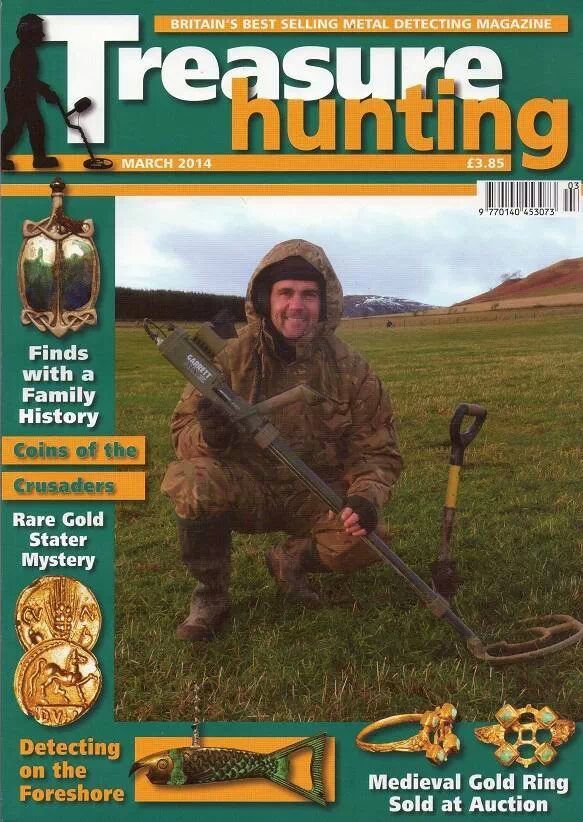
Testing the Garret PI
Part II Beach
A bit of time has passed since my land appraisal of the new Garrett ATX was printed in this magazine
This is due to me running weekly metal detecting digs and working full time. I knew I had a fortnight’s holiday coming up on a Spanish island. I have a very forgiving metal detecting widow who has had to suffer my metal detecting addiction for over 20 years.
I landed in spain and headed to the hotel and within an two hours I was on the beach, yes with the ATX ! I had downloaded the tide times and it was low tide. I managed only a couple of hours and found mostly pull tabs and coins. I had set it up the same as I would on land and it operated perfectly. This beach is man made with imported sand with underlying rocks but the ATX coped with no problems at all with these or electro magnetic interference in this or any area I tried on my holiday. I met a local guy who was detecting and ignorantly I could not understand a word he said to me but he looked excited about seeing me using the Garrett.
My aim of this holiday like most was to relax and do some Scuba diving and mostly to detect in the surf to chest height at any chance I could. We took a boat trip to my next beach but this was more of a reccy and sightseeing day but I returned the following day with the ATX. The beach is a small bay and busy but off I went leaving my wife on the beach. I had to increase the Discrimination to 4 to stabilize the detector which I expected but this allowed me to up the sensitivity to 8. The detector was super stable even though I was surrounded by shops and bars all offering Wifi etc but the ATX purred away with the big stock coil on.
The ATX sounds are like the Infinium which I loved in the surf and felt at ease with the detector instantly. The beach was a natural one this time with a nice layer of stones a scoop down, I started off with tab after tab but you have to dig these as they sound just like a ring would High/Low and most coins where Low/High. I was half an hour into detecting when I got a very quiet signal which I honestly thought was another tab but after two or three scoops I looked amongst the stones and seen the wedding band shape…Yes my first gold ring with the ATX and in Spain!! I worked away for another hour but mostly coins and tabs, I stopped for some water and a sandwich then back in with a bit more optimism and after an hour I had most of the same but I got a good loud High/Low signal and you guessed it another gold wedding band with a white gold interior band. I was over the moon with the detector and my days detecting but the scoop that I was using was not living up to the job due to the hard layer of stones and rocks below the sand which was making my digging very hard going as the sand was falling out the front of the scoop.
The ATX is not the lightest thing you can put in a suitcase but it I managed to fit this a sand scoop and all my clothes in the suitcase 15 Kilo and my 5 Kilo hand luggage. Once in Spain I visited a hardware store and bought a long brush handle for 3 euro and fitted it with ease.
Before you go detecting you must remember to use vasaline on the battery and headphone seals to keep any water out. I would also recommend rinsing the detector with fresh water at the beaches to get the salt water off it as this rots anything. I did notice that the cam locks where stiff on holiday so ensure you give them an extra long rinse. I also used toilet tissues to clean the old Vaseline from the headphone and battery sections and make sure there is no sand in these parts.
Over my two weeks I managed only two gold rings tons of pull tabs and £50 odd euro but I do put a lot of blame on my scoop which stopped me from getting to the places I wanted on the beach and to dig the depth I wanted to dig but I WILL return with a mighty scoop that wil not let me down.
If you are looking for a discriminating and ground balancing pulse induction detector that can perform on land as good as anything on the market but will also do what other top of the range Pulses can’t do, operate with excellent sensitivity to thin gold rings totally submerged in water for hours on end and not be affected by magnetic stones or outside EMF then the Garrett ATX is the only pulse detector currently on the market that can do both of these things. A good accessory would be the small Mono coil which would be my preference for the water as it was a killer on the Infinium LS. The ATX will perform as good on UK beaches as it does on Spanish ones.
I hope you found my reports helpful and not over technical. I pride myself on putting on paper exactly how I found the detector to perform. If you are ever up in Scotland look me up or find me on Facebook.
